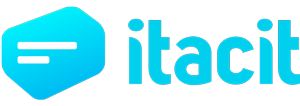Learning and Development (L&D) benefits both the employee and the employer. Not only does training boost employee engagement, organizations prosper from a future-ready staff.
Organizations can use digital learning software to design their L&D strategy to equip their employees and partners with the tools that they need to take on new responsibilities, adapt to fresh job roles, and address pre-existing knowledge gaps head-on.
Upskilling and Reskilling to Bridge Learning and Development Gaps
Technology is changing the world of work
Many industries are changing rapidly with the continued adoption of technology such as artificial intelligence (AI) and machine learning.
This rise in automation has meant a shift for certain manual labor positions to more knowledge-based, technologically driven roles. Instead of hand loading a package for shipment, for example, robots and machines are sorting, picking, and packing items. The operator’s duties shift from physically loading to overseeing the computer, coding, and optimizing machines.
To address this tech-based skill gap, organizations need to be proactive in reskilling their employees. Equipping staff with the skills and knowledge needed to develop and future-proof their careers will set them up for long-term success, while benefiting business goals as well.
Soft skills matter too
Along with reskilling and upskilling for advancements in workplace technology, the demand for soft skills like communication, critical thinking, and creativity is also changing. People communicate differently than they did even 5-10 years ago.
Employee software platforms, instant messaging, remote and digital workplaces have all shifted organizations’ day-to-day activities. Training staff on how to effectively manage people, work with (remote) teams, or problem-solve are all crucial elements that can be designed into L&D.
Performing a Skills Assessment
For a future-ready organization, anticipating the required skills of the future is imperative for building for success. Understanding where knowledge gaps exist now, and where new gaps will form in the future, is the first step toward addressing solutions to fill them.
Once an organization’s current and potential knowledge have been identified, the next step is to perform an employee skills assessment.
1. Qualitative evaluation to understand the skill levels of individuals and their teams
Surveys
-
- Voice of Employee (VoE) surveys accurately measure employee experience to help you understand how employees feel and what they’re looking for.
- General surveys regarding career development for the entire staff can give L&D leaders a holistic view on general perspective towards skilling in the workplace.
Speaking with team leaders
-
- Often direct managers and team leaders have great insight into the day-to-day interests, competencies, and potential of their staff. Speaking with those who work closely with someone can help gain insight into development paths the individual may have overlooked.
Career development interviews and discussions
-
- Having regular, direct, and transparent conversations with employees is one of the best ways to make sure both the individual and the organization are on the same page. Keeping employees involved lets them have control over their development, leading to increased engagement and general satisfaction at work
2. Quantitative evaluation to find out base knowledge and employee aptitude
Employees can be evaluated based on standardized metrics to gain a complete understanding of their skills and working points.
-
- Standardized knowledge (cognitive): Tests can uncover the knowledge base of the employees of an organization. This type of evaluation can easily be assigned through an employee software platform to specific employees or groups as a whole.
- Standardized skill (psychomotor): Skills can be evaluated through physical performance testing for manual labor positions. Depending on the industry, this could mean speed and efficiency of tasks performed or quality output and error-rate.
- Standardized attitude (affective): Employee satisfaction and motivation can be evaluated through the use of strategic human resource evaluation methods.
3. Personalize training paths and/or resource recommendations
Based on the results of the employee surveys, assessments, and career development discussions, skilling paths can be recommended to meet the exact needs of each individual.
Managers can work with L&D and HR teams to design custom training avenues for each specific profile. A digital Learning Experience Platform makes it easy to assign training modules to individuals, and allows an efficient and straightforward method of evaluation.
Resource material can always be on hand as well as direct lines of communication to subject matter experts if ever questions arise.
Use the Right Tech to Bridge the L&D Divide
An all-in-one employee software platform can bring every component of an L&D plan to one centralized hub.
Employee surveys and skill assessments can be undertaken asynchronously, at the employees’ own pace. Once skilling needs have been established, in-depth training modules can be designed within an integrated learning platform that can be accessed instantly, whenever and wherever they want.
The right all-in-one learning platform is adaptable, user friendly, and reliable. Organizations are made up of a mix of personalities, experience, and digital proficiencies.
A practical employee app and L&D system should elevate the employee experience for all users.
iTacit offers a comprehensive solution for assessing knowledge gaps and disseminating personalized training paths. Accessed at their own time, on smartphones, tablets, or laptops, iTacit’s Learning Experience Platform and L&D capabilities enable employees to get the most out of their development journey.
Not only are the employees setting themselves up for career success, organizations will benefit from a more engaged, satisfied, and future-proofed staff.














